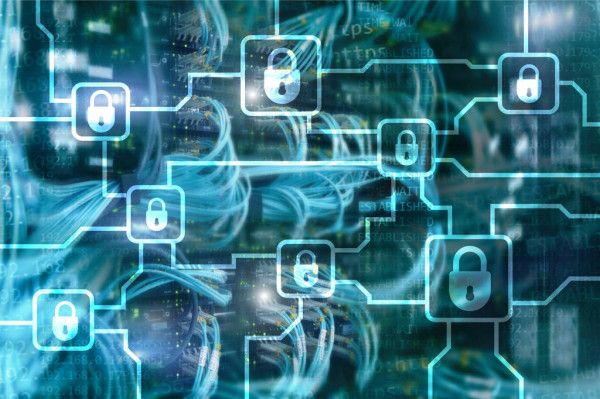Strengthen Enterprise Security Through Network Isolation Approach

Virtual networks are separated from other virtual networks and from the underlying physical network, offering the least privileged protection concept.
IT security managers are increasingly waking up to realize that the sheer quantity of regular generated malicious and non-malicious software programmers requires them to be on their toes, searching for effective countermeasures. They are largely moving to network segmentation/isolation to ensure security, sensing the failure of traditional security approaches.
Corporate IT security managers are rapidly waking up to realize that the sheer volume of malicious and non-malicious software programs that are generated daily requires them to be on their toes, looking for effective countermeasures. Sensing the failure of conventional security approaches, they are largely shifting to network segmentation/ isolation for ensuring security.
What Is an Isolated Network and Why Is It Important?
By making changes in the system security architecture and network isolation policy, organizations can create silos, also known as VLANs or virtual local area networks within their network. It allows a company to separate assets within the environment as per its function or security level.
It is worth noting that for a system to be PCI compliant, it needs to be isolated from the other systems of the company. By doing this, you can ensure that they are appropriately protected by a firewall. Also, the PCI compliant system should be open only to employees with access to ensure effective isolation. It is quite important as isolation largely brings down the costs and scope of audits.
Unsegmented networks usually have a flat internal structure, which means once you enter the network, you have access to all the resources. With network isolation, you can create barriers, which will make it difficult for an intruder to infiltrate the network. By splitting the network into small segments, enterprises can easily monitor and identify suspicious activity, and at the same time, implement stronger security measures to minimize the risk of losing important data.
5 Network Security Threats in 2020
Network isolation for enterprise security has become increasingly relevant in 2020 due to the rise in severe network security threats. Since any network with a connection to the internet is vulnerable to attack, the security professionals of the business community must rise to the occasion.
Listed below are the top five of those major risks.
Ransomware
A criminal money-making scheme, ransomware involves an infiltration of your systems followed by messages, asking for ransom in exchange for your system. Ransomware can disrupt business operations.
Some of the impacts of ransomware attack include loss or destruction of crucial information, productivity loss, damage of systems, data and files, etc. Notably, it has cost businesses $20 billion in 2020, so far.
Distributed denial-of-service/DDOS Attack
These dangerous attacks are notorious for flooding a target server, service, or network with internet traffic. According to research, 50 percent of DDoS attacks lead to noticeable disruption of services.
Anything ranging from computers to IoT devices can be a target. The affected service becomes unavailable, which means you will not be able to access web pages, mobile applications and email services. The attack usually lasts for several hours.
Phishing
According to the FBI, fraudsters have stolen around 12 billion USD in five years through phishing. It is a method in which sensitive information is stolen by contacting employees via mail, phone, or fax and posing as a legitimate institution. It can tarnish the reputation and disrupt the functioning of a business.
Cryptojacking
In the second quarter of 2020, there has been a spike in a novel kind of security threat — browser-based cryptojacking. Alarmingly, instances of this attack seem to have gone up by 163 percent.
As the name suggests, it is the process of mining cryptocurrency from an unauthorized computer that hackers can access by getting the user to do things, like clicking on a malicious link in an email.
Botnets
This is another major threat facing security professionals. Hackers remotely control a network of computers called a botnet that can spread ransomware to your company device without being detected.
Botnets can wreak havoc on websites and mobile applications. Many online businesses have fallen prey to bots as they can destroy important information, steal content, and even generate spam.
Network Security Best Practices That Every Enterprise Should Follow
To keep your enterprise safe, there are a variety of security strategies that you can leverage. Let us look at the best practices for cyber hygiene, and the preventive approach to security.
Embrace a Whitelist Approach
A popular method employed by security vendors is whitelisting, which is baked into their security products to combat malware. Whitelisting, in essence, is an attempt to put together a list of applications that are free of malware and worthy of trust, which the IT and user community agree to support. This approach is considered as the future of network security, as allowing only trusted apps rather than blocking the untrustworthy apps is a potent tool against malware.
Use a Firewall
For over twenty-five years, firewalls have been a barrier between untrusted outside networks and trusted internal networks. This is because they are a great way to monitor incoming and outgoing traffic on your network. It is done to see what needs to be blocked based on a set of predefined rules. Companies can use firewalls to control online activities like blocking access to unapproved websites. You can use it to meter and limit the bandwidth. It can prevent unauthorized users from accessing their websites. It is basically the first line of defense against cyberattacks.
Plan for Mobile Devices
Employee mobile device security has to be given priority due to its increasing popularity in day-to-day business operations. Google Play Protect has been shown to detect only 65.8 % of malware in the operating system as opposed to the industry standard of around 96 percent. Hence, it is prudent to implement a complete mobile security suite approved by an IT specialist. At the same time, installing a powerful antivirus solution to safeguard sensitive data and keep out unauthorized users, is a wise decision. Also, employing mobile device management, blacklisting, keeping the devices upgraded, and enabling two-factor authentication and biometrics can be a great addition to your safety arsenal.
Go Passwordless
According to Microsoft, around 150 million people have gone passwordless, and the number is expected to double this year. This trend is caused by the ease of using modern authentication technologies that also eliminate the risks associated with passwords. Passwords also clutter up IT help desks and reduce productivity, so it makes sense to go passwordless with multi-factor authentication/MFA. It improves the consumers’ experience as they no longer have to memorize any credentials. Some of the use cases of passwordless authentication include – make a secure payment online, let consumers log in to their online accounts, SMS-based passwordless login, and a sign up for a service.
Use Multi-Factor Authentication
Multi-factor authentication is a powerful tool to prevent data breaches due to lost or stolen credentials. According to Microsoft, enabling MFA can ensure your accounts are 99.9 percent less likely to be tampered with. Also, the use of MFA allows for seamless single sign-on from any device/location. This authentication method includes biometric and hardware tokens to keep out potential threats. You may already be using MFA without realizing it. Some typical use cases for MFA include – password resets, device authorization and management, transactional approval, and identity confirmation, to name a few.
Regularly Back Up All Data
One of the most obvious ways to safeguard data is to back it up as often as possible. While there are backup options that involve external devices, their risk of being destroyed makes the cloud backup the best option. For added security, cloud providers also offer technology, such as data encryption and server virtualization. By using a cloud data center, you can lower your maintenance cost as you do not need to maintain hardware, scale as per your requirements almost instantly, pay for what you use, and easily access the information remotely.
Install Anti-Malware Software
Installing powerful software to keep your network safe from spyware, adware, and worms are mission-critical. It is best to employ scalable anti-malware software that keeps your devices safe whether they are at home or the office.
Conclusion
Now that you know the importance of network isolation for enterprise security, it is clear that it requires a project management approach and collaboration with the other functional areas of the business. Because of its effectiveness, it is set to go from a best practice to a fundamental requirement.
Originally published at Dzone



